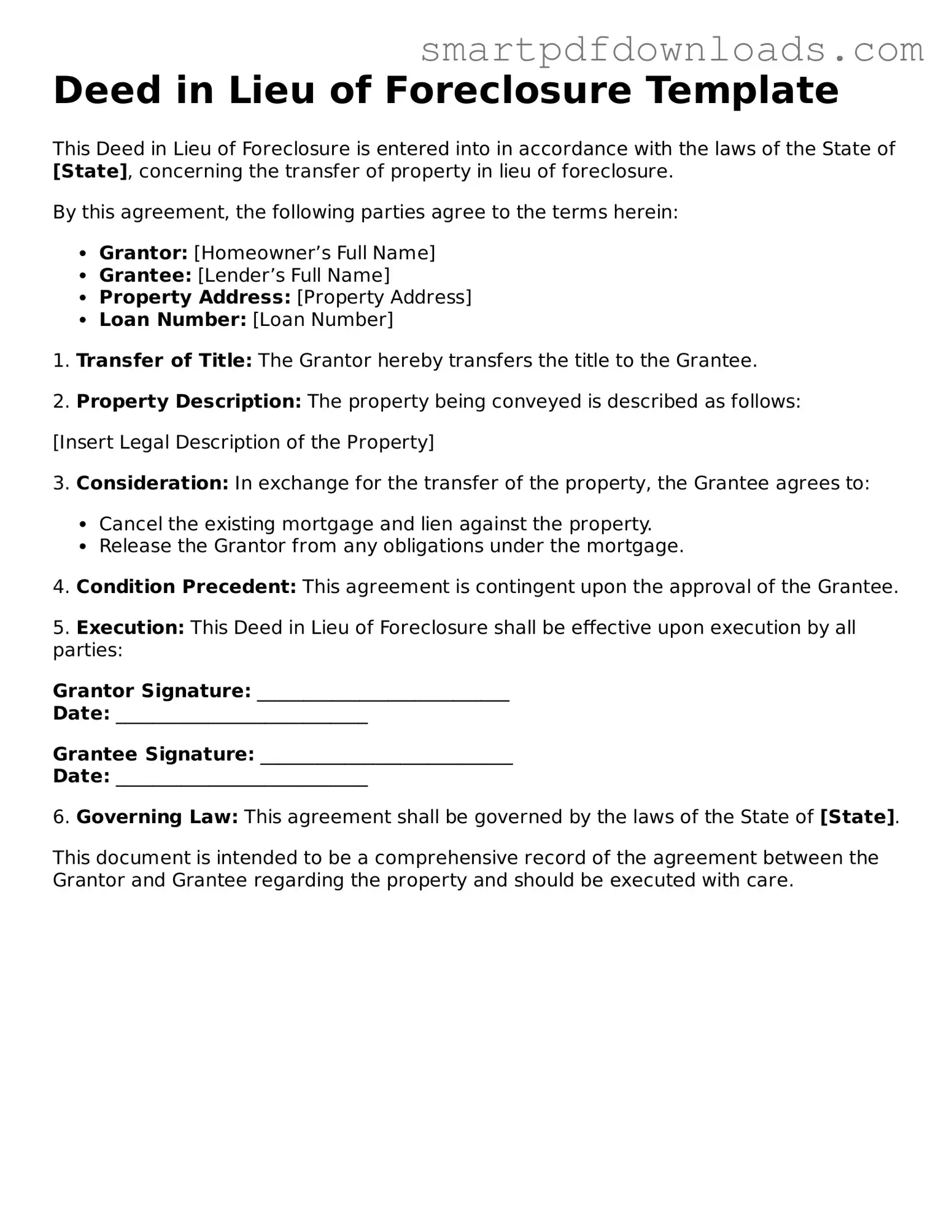Deed in Lieu of Foreclosure Template
This Deed in Lieu of Foreclosure is entered into in accordance with the laws of the State of [State], concerning the transfer of property in lieu of foreclosure.
By this agreement, the following parties agree to the terms herein:
- Grantor: [Homeowner’s Full Name]
- Grantee: [Lender’s Full Name]
- Property Address: [Property Address]
- Loan Number: [Loan Number]
1. Transfer of Title: The Grantor hereby transfers the title to the Grantee.
2. Property Description: The property being conveyed is described as follows:
[Insert Legal Description of the Property]
3. Consideration: In exchange for the transfer of the property, the Grantee agrees to:
- Cancel the existing mortgage and lien against the property.
- Release the Grantor from any obligations under the mortgage.
4. Condition Precedent: This agreement is contingent upon the approval of the Grantee.
5. Execution: This Deed in Lieu of Foreclosure shall be effective upon execution by all parties:
Grantor Signature: ___________________________
Date: ___________________________
Grantee Signature: ___________________________
Date: ___________________________
6. Governing Law: This agreement shall be governed by the laws of the State of [State].
This document is intended to be a comprehensive record of the agreement between the Grantor and Grantee regarding the property and should be executed with care.
